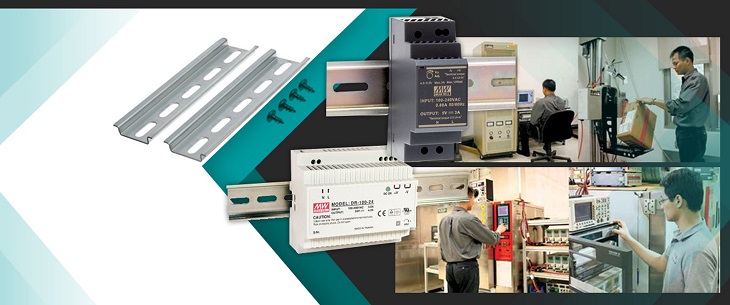The number of times that a technician has to check the state of a power supply can vary depending on the quality of the build and its components. But no matter how well you know the elements of your power supply there’s no way you could predict when it’s going to need some repairs. What you can do, however, is to ensure that you have easy access to it and one of the ways is to go for a rail. In today’s article, I’ll compare the three most used types of rails in mounting power supplies.

DIN
The installation of this rail is pretty straightforward and it is way easier to configure it than it is with other types of rails. You will need to put fewer screws as there are fewer holes. Mounting and unmounting a DIN rail power supply is super easy as you will only need to slide it in place or out of place when needed. The most widely used one out of the three size standards of the DIN rail is the 35mm one as devices of this nature are made compatible mostly with this size standard. The single bracket design makes for a very tidy mounting space.
With a DIN rail, there’s no need for you to redesign the whole line in order to incorporate a new device or simply change places as the rails purpose is to save you as much time as possible. Its minimalistic design and function let you focus on what matters most and it also gives you a sleek and compact space for you to mount multiple power supplies at once. The versatility of a DIN rail power supply can’t be matched, mainly because of how simple it is to make changes to it. This is definitely the most user-friendly rail design.

Panel
Panel mounting a power supply will ensure you get a more long-term solution and a sturdier one as well. The setup process of panel mounts takes a lot of time as you need to screw the fasteners very precisely in order to properly secure the hardware. This type of mounting is best if you need to operate in harsher environments and in applications where high shock and vibration absorption is needed.
Panel mounting is for users who aren’t changing the order of power supplies very frequently as mounting power supplies is also a bit of a tedious process. With every mounting procedure, you must use the correct screw length and you will need a manual for the right spacing between each power supply. This mounting hardware can be put on a wall or any other flat surface – just make sure you have the right screw thread in order to achieve maximum stability.

Rack
The most obvious feature that racks are known for is security because in a way they provide an extra layer which can keep dust and pests off the power supply. A rack has multiple slots and usually, each one of them can take in only one power supply. Although not a very popular choice for storing power supplies, racks are very compact as they are able to store multiple hardware units in one small space. This makes them ideal if you are working in a small space.
If you are a frequent user, installing rails is important if you want to have easier access. Racks come in a closed or open frame with the latter being the more popular option as it allows for easier troubleshooting and maintenance. Another good thing about racks is that they come in a variety of sizes ranging from 1U to 7U and knowing exactly what your needs are will make it easier to get the right one.


















